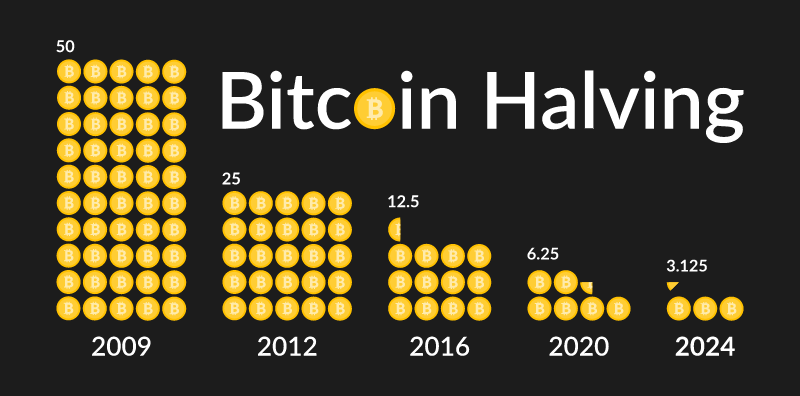Understanding RSI and MACD in Crypto Trading: A Complete Guide
Crypto trading is not just about buying low and selling high—it’s also about timing and understanding market momentum. Two of the most powerful technical indicators used to analyze market conditions are the Relative Strength Index (RSI) and the Moving Average Convergence Divergence (MACD). These indicators help traders evaluate market trends, spot reversals, and make informed decisions in volatile crypto environments.
In this comprehensive guide, we’ll break down RSI and MACD: what they are, how to read them, when to use them, and how to combine them effectively in your trading strategy.
What is the Relative Strength Index (RSI)?
The Relative Strength Index (RSI) is a momentum oscillator that measures the speed and change of price movements. Developed by J. Welles Wilder Jr., it provides insight into whether a cryptocurrency is overbought or oversold—which can help predict potential reversals or corrections.
RSI Formula:
RSI=100−(1001+RS)\text{RSI} = 100 – \left( \frac{100}{1 + RS} \right) Where:
- RS = Average Gain over X periods / Average Loss over X periods (typically 14)
How to Read the RSI Indicator
RSI values range from 0 to 100.
- Above 70: Overbought (possible price drop)
- Below 30: Oversold (possible price increase)
- 50: Neutral or midpoint trend
Example Use in Crypto:
If Bitcoin’s RSI reaches 75, it indicates that the price has been increasing rapidly and may be due for a short-term correction. If Ethereum’s RSI drops to 25, it could signal a buying opportunity.
RSI Trading Strategies in Crypto
1. Overbought/Oversold Reversal
- Buy when RSI < 30 (oversold zone) and starts to rise.
- Sell when RSI > 70 (overbought zone) and starts to decline.
2. RSI Divergence
- Bullish Divergence: Price makes lower lows, RSI makes higher lows → Possible upward reversal.
- Bearish Divergence: Price makes higher highs, RSI makes lower highs → Possible downward reversal.
3. RSI Trend Confirmation
- RSI crossing above 50 may confirm a bullish trend.
- RSI crossing below 50 may confirm a bearish trend.
Limitations of RSI
- RSI can stay overbought/oversold for a long time in trending markets.
- Best used with trend indicators or volume indicators to avoid false signals.
What is MACD (Moving Average Convergence Divergence)?
MACD is a trend-following momentum indicator that shows the relationship between two moving averages of an asset’s price. Created by Gerald Appel, it helps traders identify momentum shifts and potential entry/exit points.
MACD Components:
- MACD Line = 12-day EMA – 26-day EMA
- Signal Line = 9-day EMA of the MACD line
- MACD Histogram = MACD Line – Signal Line
The MACD histogram visually displays the strength of bullish or bearish momentum.
How to Read the MACD Indicator
- MACD Line crosses above Signal Line → Bullish signal
- MACD Line crosses below Signal Line → Bearish signal
- MACD above zero → Uptrend likely
- MACD below zero → Downtrend likely
- Widening histogram → Strengthening momentum
- Contracting histogram → Weakening momentum
MACD Strategies in Crypto
1. Signal Line Crossovers
- Buy when the MACD line crosses above the signal line (bullish crossover).
- Sell when the MACD line crosses below the signal line (bearish crossover).
2. Centerline Crossover
- MACD moving above zero confirms bullish momentum.
- MACD moving below zero confirms bearish momentum.
3. MACD Divergence
- Bullish Divergence: Price makes lower lows, MACD makes higher lows.
- Bearish Divergence: Price makes higher highs, MACD makes lower highs.
These patterns often signal potential trend reversals.
RSI vs MACD: Key Differences
| Feature | RSI | MACD |
|---|---|---|
| Type | Momentum Oscillator | Trend-following & Momentum |
| Range | 0 – 100 | No fixed range |
| Signal Type | Overbought/Oversold levels | Crossovers and divergence |
| Best Use Case | Identifying reversals | Identifying trend continuation |
| Works Well In | Ranging markets | Trending markets |
Combining RSI and MACD for Better Crypto Trading
Using both RSI and MACD together enhances accuracy and filters out false signals.
Example Strategy:
- Wait for MACD bullish crossover (momentum shift)
- Confirm RSI is below 70 and trending upward (still room to rise)
- Enter Long Position
- Exit when RSI nears 70 and MACD starts weakening
This combo reduces the risk of entering trades during exhausted moves.
Real Crypto Example:
Bitcoin Example
- On the 4-hour chart:
- MACD Line crosses above Signal Line → Bullish
- RSI at 45 and climbing → Momentum building, not overbought
- Entry Signal: Confirmed
- A few candles later, RSI reaches 72 and MACD histogram flattens → Exit Signal
Result: Profitable short-term trade confirmed by dual indicators.
Using RSI and MACD on TradingView or Exchanges
Platforms:
- TradingView: Set custom RSI and MACD alerts
- Binance / Bybit / KuCoin: Built-in charts with indicators
- CryptoQuant / CoinGlass: Macro trend insights with RSI/MACD overlays
Tip: Customize settings for fast-moving markets like crypto. For instance:
- MACD: 8/21/5
- RSI: 7 or 9 instead of 14 for quicker reaction
Tips for Using RSI and MACD in Crypto
- Use RSI and MACD in combination for strong confirmation.
- Avoid using indicators in isolation—always consider price action, support/resistance, and volume.
- Backtest strategies using historical data.
- Don’t chase signals—wait for confirmation.
Common Mistakes to Avoid
- Overtrading RSI extremes – Overbought doesn’t always mean sell in trending markets.
- Ignoring divergence – Divergences often appear before major moves.
- Using MACD on low timeframes – Too much noise, better on 4H or daily charts.
- No risk management – Always use stop-losses.
Conclusion
RSI and MACD are among the most powerful and versatile tools in a crypto trader’s arsenal. Whether you’re looking to enter on pullbacks, ride momentum trends, or catch reversals, these indicators provide clear signals when used properly.
Remember: No indicator is perfect. RSI and MACD work best when combined with proper risk management, price analysis, and emotional discipline. With practice, you’ll be able to read the market like a seasoned trader and boost your chances of success in the ever-volatile world of crypto.




